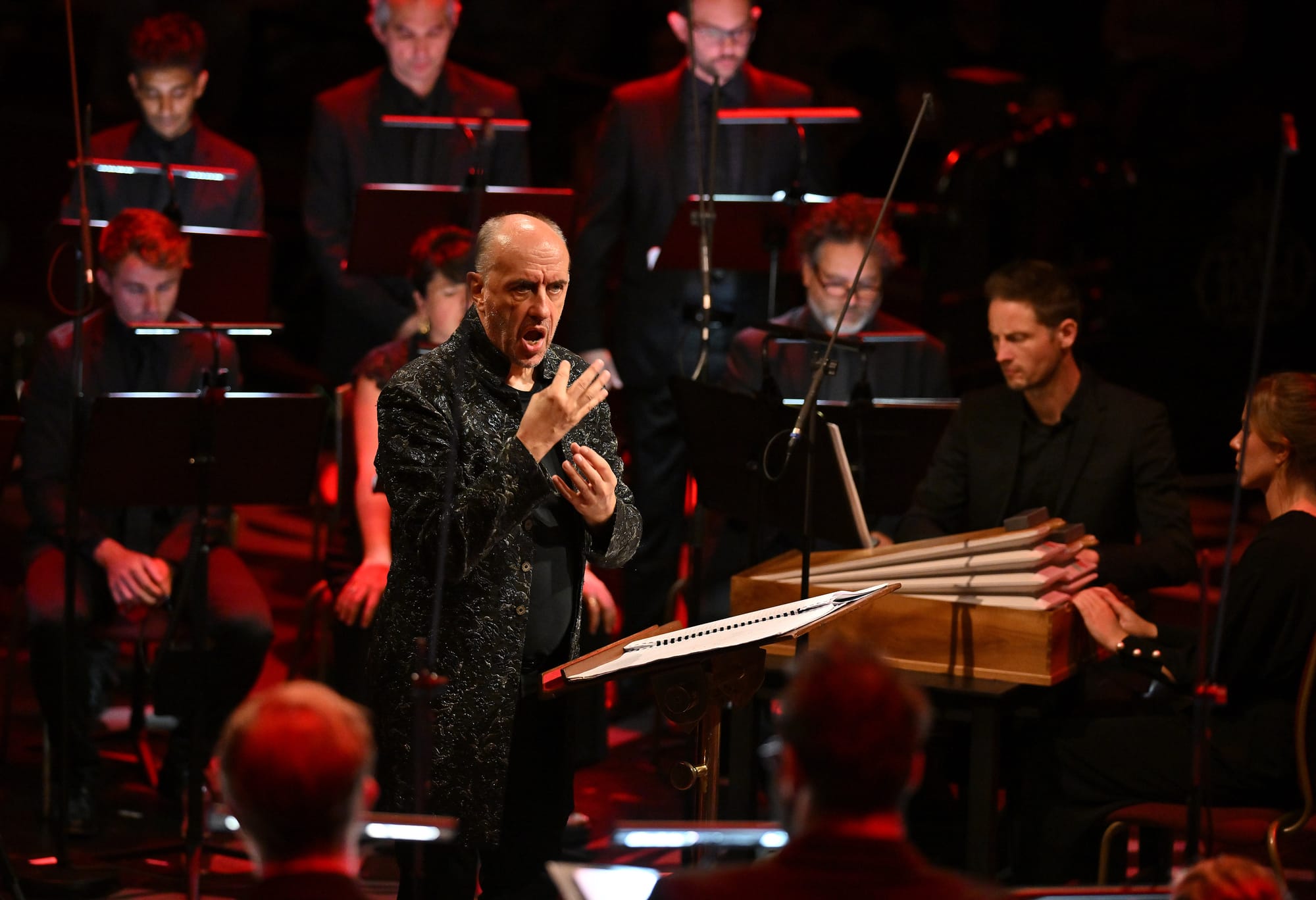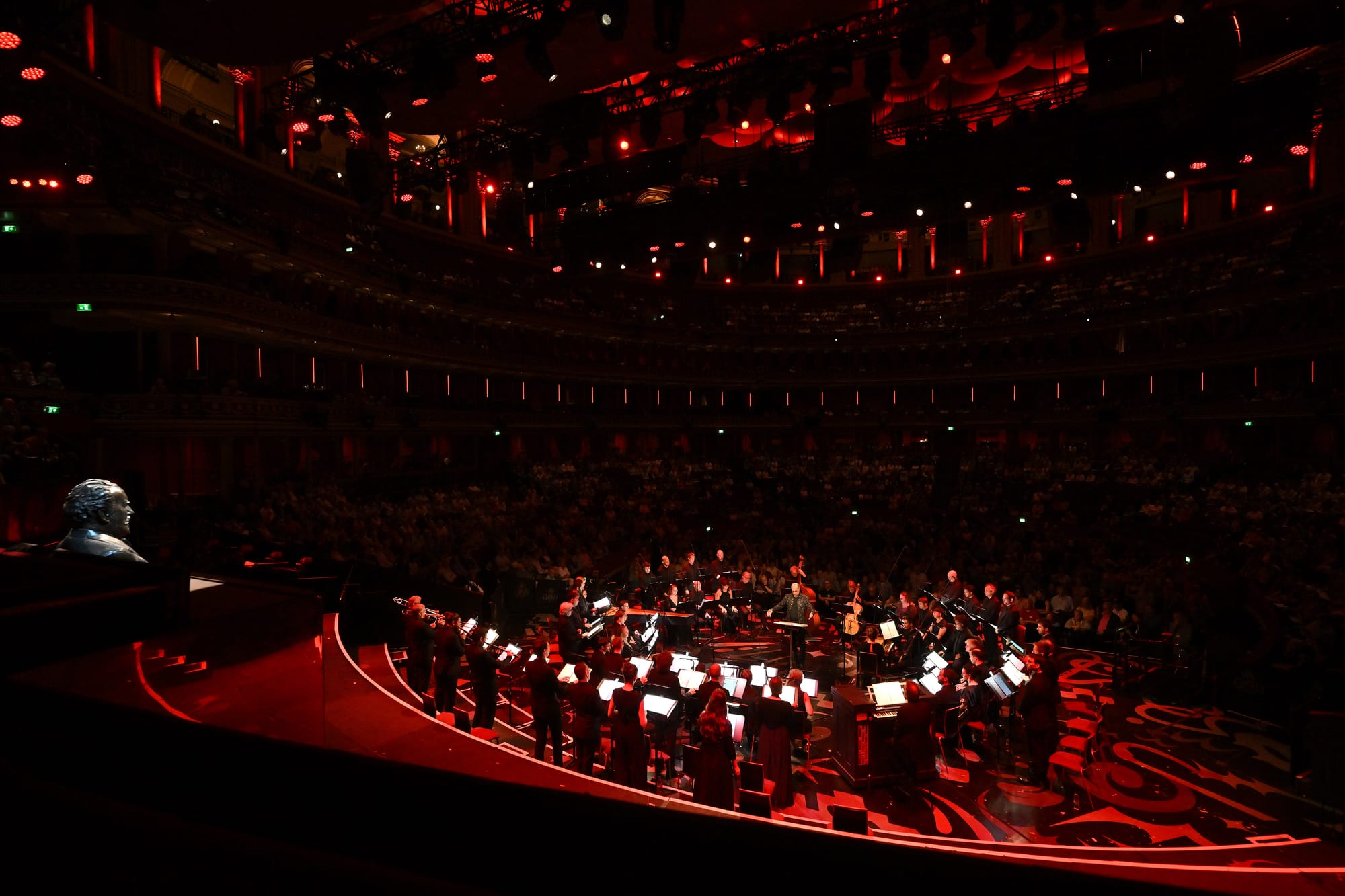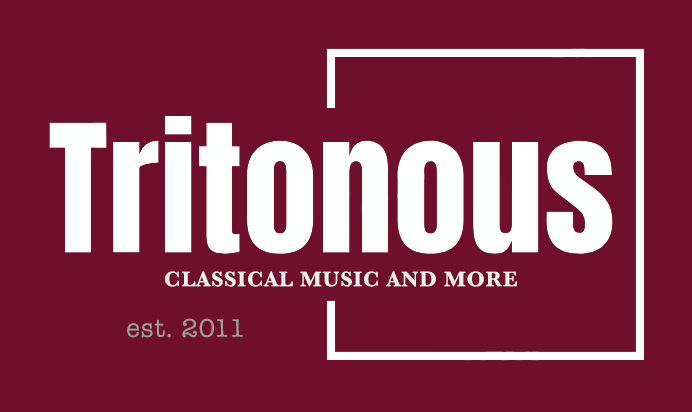
PROMS Striggio & others Le Concert Spirituel / Hervé Niquet (conductor). Royal Albert Hall, London, 17.08.2025
Striggio Mass, ‘Ecco sì beato giono’, preceded and interspersd with works by Benevolo, Coreccia, Massenzio & Palestrina. Motet, Ecce beatem lucem.
This should be what the Proms is all about. ‘Super-size me,’ said Cosimo I de’ Medici when asking for music (probably not a direct quote); and ther eis certainly a lot of historical weight here.
Alessandro Striggio’s dates are a bit vague: he was born in 1536/7, although we do know he died in 1592. Involved in the Florentine court’s music, he provided music fo rthe wedding of Cosimo’s heir, Francesco de’ Medic to Joanna of Austria in 1565.
Not only does it seem to fit the Proms brief perfectly, but Striggio’s mighty mass in 30 (count ‘em) parts has form here, as it received its modern premiere in July 2007 (Peter Phillips leading The Tallis Scholars and the BBC Singers). What Hervé Niquet did was to plce the mass within a liturgical reconstruction. Also involved were composers with a penchant for the large (and, sometimes for contrast, small): Orazio Benevolo (sometimes seen as ‘Benevoli’), Francesco Corteccia, Domenico Massanzio and Palestrina.
With a space as large as the Royal Albert Hall, the expectation was (mine, anyway) that there would be a ptonounced spatial element. No: the performers processed on to a drone, led by brass, and formed a circle around Niquet, who presumably had the best ‘seat’ in the house. What we, the audience got, was a sort of heavenly mush a lot of the time. A lovely sound bath, for sure, but listen to Robert Hollngwoth and I Fagiolini’s recordings of Striggio, Tallis, and Benevolo, for example (on Coro) to hear how detail and majesty can intersect. I wonder if Niquet does favour a larger acoustic, though? His disc of the Striggio Mass (which also includes much of the repertoire heard here in London) was recorded at Notre Dame, and where it is referred to, in toto, on that Gloss recoding as ‘a service for St John the Baptist in Florence’.
The booklet essay, aptly titled as The Extravagance of the Italian Renaissance, provided much useful background. The opening processing to the anonymous Beata viscera (… Marie virginis: O blessed flesh of Virgin Mary) flowed into the rich polyphony of Orazio Benevolo’s Laetatus Sum. Benevolo (1605-72), French by birth, was a chorister in a French church in Rome (San Luigi dei Francesi), a church known for its own extravagance of choral riches. He probably came into tutelage with Vincenzo Ugolini, who specialised in multi-choir works. In 1630, Benevolo succeeded Allegri (yes, that one of the Miserere) before moving to Vienna and a final return to Rome. His setting here of Psalm 121, Laetatus sum is for two choirs, There is an extravagance of texture, for sure, but also a structural awareness of rhythm (Niquet ensured ‘Propter fratres meos et proximos meos’ – For my brothers’ and my neighbours’ sake’ – was very clearly enunciated, and ‘Gloria Patri et Filio et Spirito Sancto’ – Glory be to the Father etc – was beautifully sprung). Benevolo’s Miserere (Psalm 50), a glorious flowering of polyphony (listen to Niquet’s recording to truly relish this). All of the Benevolo works here are for two choirs.
Poor old Francesco Corteccia was relegated to a subheading of ‘Corteccia and Some Lesser Madrigalists’ in Gustave Reese’s Music in the Renaissance some time ago. All of Corteccia’s various books of madrigals were dedicated to Cosimo, including some that were sung at Cosimo’s wedding to Eleonora of Toledo in 1539. The pieces heard here are clearly structured as counterpoint above plainchant: Niquet gave the chant plenty of space in Bonum est confiteri (It is good to give praise to the Lord; this is Psalm 92); Gloria Patri emerged as an extension thereof, now with a florid – but quiet – soprano line (I notice the same dynamic proportions are maintained in Niquet’s recording).
All of which was prefaratory to the main event (rather like Puccini sometimes, reflecting on the LSO Prom of Suor Angelica), Niquet seemed to make a real textural distinction: this was suddenly much warmer in sound, and while the ‘Kyrie’ is contrapuntal, it is the brightening at ‘Christe eleison’ that worked so well. Niquet’s mix of coir nd instruments is clearly carefully considered too.

The piece by Domenico Massenzio (1586-1637) does not turn up on Niquet’s disc. Priest and musician. Massenzio arrived in Rome two decades before Benevolo. The Ave Regina caelorum hails from the first volume of Sacrae cantiones, 1612, a five-voice celebration of the Virgin and Queen of Heaven. Interesting to hear a harpsichord prominent here, but it was the fragility of ’Dignare me, laudare te’ (Allow us to praise thee) that impressed so much. There’s not a lot of Massenzio in the catalogues, but Tactus has recorded a Christmas Noe, Noe and the beautiful Magi videntes stellam (Capella Artemisia/Candace Smith), well worth seeking out.
Niquet, returning to the Striggio Mass, ensured the intonation of chants before the harmonies and polyphony sets in, something that emphasised the richness of ‘Et in terra pax’ (And on earth peace). The shifts in texture are miraculous, leading eventually to a sackbut-encrusted ‘Amen’.
For this performance, Niquet elected to insert Palestrina works, but played insrumentally only: this is ‘most likely’ Palestrina’s 500th birthday year. The first was Pccavimus, a truncation of Tribulationes civitatum). For those of us who have played brass arrangements of such music, such an approach gives a warm hum of nostalgia. It also worked magnificently in context here, Corteccia’s Alleluia following on, an echo of his Bonum est confiteri.
Credo in unum Deum’ came the cry, leading to Striggio’s ‘Patrem omnipotentem’ (Omnipotent/Almighty Father) where, rather like the ‘Gloria,’ textures tend to build up in waves. This is not to ignore the fact that Striggio can be quite groovy (the opening, certainly groovier here than in Niquet’ recording), intended presumably to contrast with thr later, much more internal and lovely (traditionally?) spiritual “Et incarnatus est’. Those ‘waves,’ incidentally, are heard in microcosm at the very end of this movement, brought out beautifully by Le Concert Spirituel: ‘’Et expecto,’ and a near-arrival at ‘Et vitam venuri seculi’.
What a treat to have Benevolo’s Magnificat next, in the ‘concertato’ style (interspersing solo/duet/trio and some miraculously florid instrumentals with big choral statements). Each detail was loved, particularly perhaps the shaping of ‘Suscepit Israel,’ and the lovely descending line of ‘Sicut locutus est’. If only we had Benevolo’s Mass for 12 choirs (chois, not voices: 48 voices). We know he wrote one, we just don’t know where the score is …
The ‘Sanctus’ and the ‘Benedictus’ of Striggio’s Mass sit nicely together, shorter but not slighter, the Sanctus’ descending soprano line maybe a half-sister to music we had in the Benevolo Magnificar. Perhaps: the ear will make associations by proximity. It is the harmonies of the ‘Benedictus’ that astound, though, somehow even more profound in the Albert Hall; the ‘Hosanna’ felt a little restrained live, though. Palestrina’s Pater noster acted as instrumental contrast (actually, hearing it afterwards in choral version – try Harry Christophers and The Sixteen on Coro – made me think of the instrumental as an ‘original,’ so this approach must be pretty convincing …). How beautiful the contrast to the tissue-delicate vocalisms of Massenzio’s rarely-heard Filiae Jerusalem.
The ‘Agnus Dei’ of Striggio’s Mass is possibly its most devotional moment, ‘miserere nobis’ truly beautiful. Sudden octaves in the repetition were so together here; the full complement of players and singers coming together for the end of the Mass …
… but not the end of the concert. Corteccia’s glorious Tu puer, propheta altissimi vocaberis (And thou, child, will be called the prophet of the most high), a disiunct separation of low and high voices, followed, as did Striggio’s motet Ecce beatam lucem (Behold the blessed light), the perfect close, bight yet rapt, more waves of imitation and a text that ends in paradise (‘Nos hinc attrahunt recta in paradisum’). 40 voices; eight minutes; glorious. The piece is, motivically, an extension of the Mass; it was probably performed in 1568 at a wedding in Munich; the text is by the Latin poet/composer Paul Melissus. The vision of New Jerusalem is unforgettable.
This was a Prom many surely will never forget. Listening to recordings may allow for more elucidation of strands (whether Niquet or, in Striggio and Benevolo, Robert Hollingworth), but the sense of coming together for a recreation of a liturgical event (fittingly, on a Sunday) was palpable.








